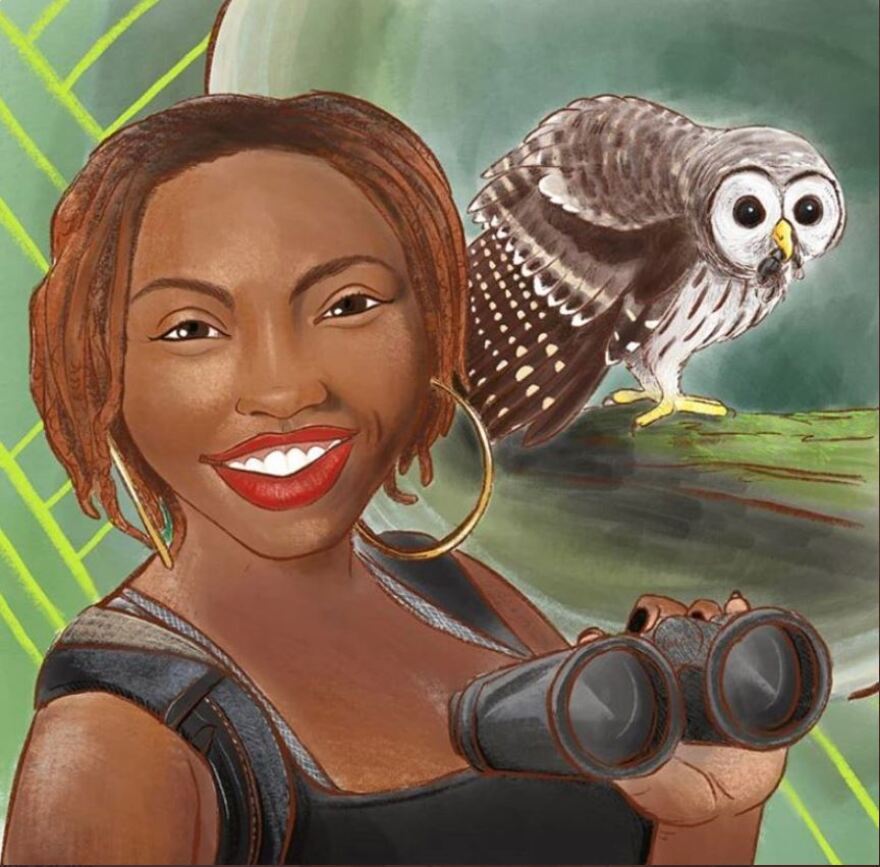Outside/In is a show about the natural world and how we use it – but access to nature is not equal.
Black Birders Week
Sam Evans-Brown + Taylor Quimby
On May 25, 2020, the same day that police killed George Floyd in Minneapolis, Christian Cooper was birdwatching in the Ramble, a 36-acre semi-forested woodland in New York City's Central Park. He asked a white woman to obey the park rules and leash her dog, but she refused and called the police.
"I'm going to tell them that there's an African-American man threatening my life," she told Cooper, who recorded her on his smartphone.

The incident demonstrates how the experience of public outdoor spaces isn't the same for everyone. In an article for Citylab, Brentin Mock wrote that "peaceful green spaces just as easily induce anxiety and trauma for black and brown people, especially when they know the cops can be unleashed at any moment."
But in response to the encounter, and "the murders of Ahmaud Arbery, Breyonna Taylor, George Floyd, and the countless others," a group of naturalists under the umbrella BlackAFinStem organized #BlackBirdersWeek, a week-long program celebrating black nature enthusiasts and scientists.
"The fact that people think that racism doesn't happen in the birding community is pretty laughable to me," said Danielle Belleny, wildlife biologist and co-organizer of #BlackBirdersWeek.
"I've been followed around by people that are on trails because they think I look suspicious with my binoculars... or I've also had the cops on me while I've been working. And it's really frightening when those situations happen."
"I think birders, as a whole, are very inviting," said Belleny. "However, once you get inside the group, you do start to understand, oh yeah, this is the same racism I experienced when I was at school, or some other activity. The racism is still the same."

While #BlackBirdersWeek highlights those experiences, the organizers also aimed to elevate the joy and passion of black naturalists.
"We wanted to provide reassurance through community by reaching out and letting other people know who are maybe isolated in their interest... you have friends. We are here. Come join us, even though it's online. We definitely have a community," said Belleny.
While #BlackBirdersWeek ended on June 5, Belleny said, "we're going to be out here everyday... we need to highlight more black voices in all STEM topics."
"Next year, #BlackBirdersWeek is going to be even more poppin'."

Swimming Lessons
Justine Paradis + Daniela Allee
Swimming is an activity that is, depending on who you are, where you are, when you are alive in history, more or less a part of human experience -- and in the United States, it is deeply connected to slavery, segregation, and violence. But organizations like Black Kids Swim aim to change by supporting black swimmers and showcasing black joy.
The full episode is available here.
How racist housing policies affect health + unequal exposure to climate-driven heat waves
Taylor Quimby
As protests against police violence have swelled to huge numbers this week, temperatures have also climbed into one of the first serious heat spells of the year, with Washington, D.C. hitting the mid 90s.
Severe heat is the deadliest form of extreme weather in the United States. Because of the design of urban spaces combined with the country’s history of discriminatory housing policies like redlining, Black Americans and other marginalized communities are affected in disproportionate numbers.
"Like so many aspects of the climate crisis, heat doesn't affect all people equally," said Rachel Ramirez, an environmental justice reporter at Grist and author of “Another legacy of redlining: Unequal exposure to heat waves.”
Urban heat islands, she explained, are also created by humans through design choices.
"Tall buildings, dark roofs, [and] black pavement cause the air to stagnate, and they all attract and absorb sun rays. Cities like New York, Chicago or Los Angeles are way hotter than, say, a suburb that's just a few miles away from that city, and people of color are more likely to live in urban heat islands than white people," said Ramirez.
"Our zip codes are a strong predictor of our health, because it shows what we're exposed to," said Ramirez. "Marginalized, low-income communities of color bear the brunt of extreme weather events."







